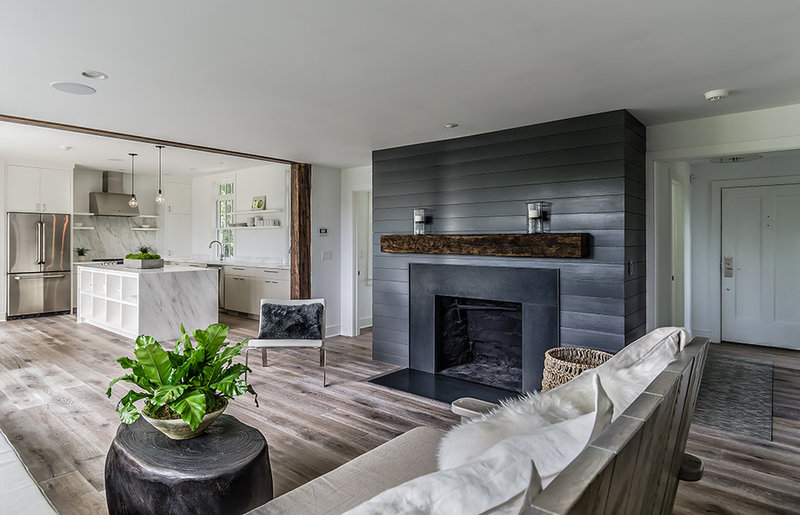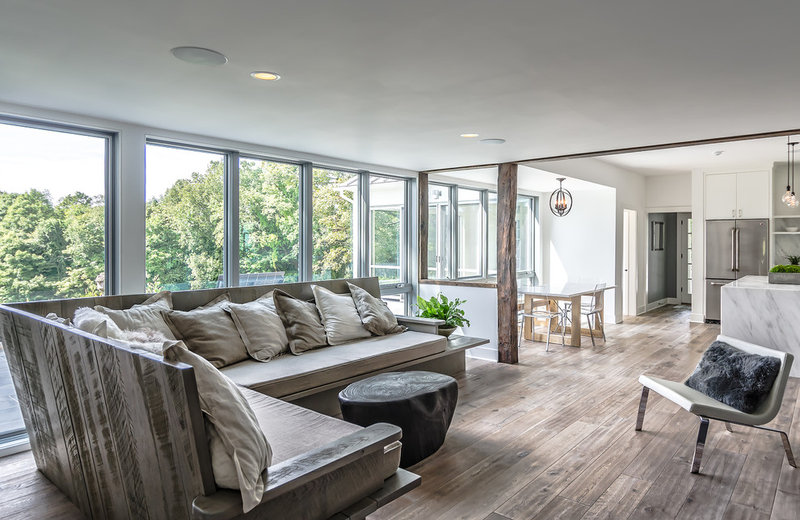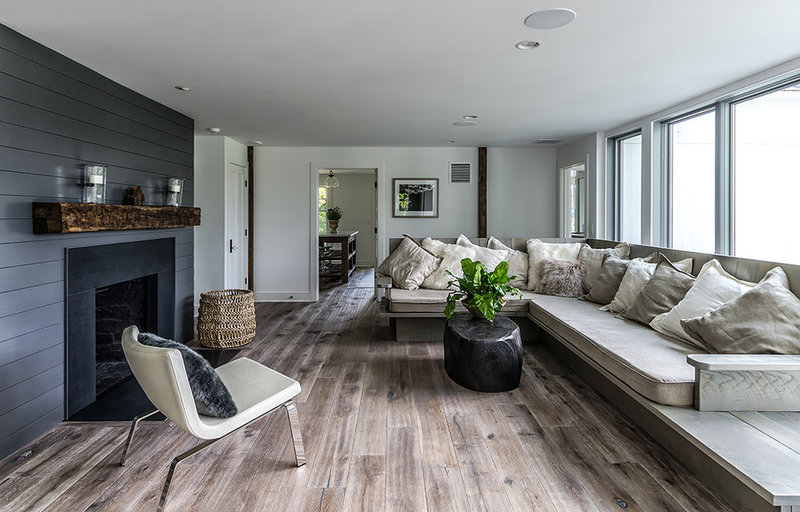Except for Scouts toasting marshmallows or hotdogs on a stick over a camp fire, the skills of open fire cooking that fed our forebears for millennia are largely forgotten. The wrought iron tools and cast-iron utensils that baked many a venison stew, harbor-pollack chowder, or mess of ham and beans are relegated to antique shops. But much of the terminology lives on in the names of items still found on the kitchen shelves of today, and much of the old ironware is still cast — more for its curio value than for use. In the frantic hassle that passes for modern life, it is good on a chilly fall evening to light a grate fire and take the time to try your hand at fireplace cooking the way great-great-great-grandmother did. If the spit-roasted haunch turns out cold in the middle and the Yorkshire pudding burns you can always send out for a pizza or get some fish sticks out of the freezer and pop them into the microwave.
Any fireplace will happily cook while it heats — persuading your wood to do double duty. Refer to pellet stove guide for it’s installation. You can wrap sweet corn, potatoes, fresh-ca’ught trout, and apples in tinfoil and bury it in the ash bank just as you would in a camp fire. But there’s no timer or automatic thermostat to regulate a live fire for more complex recipes.
It takes constant attention to bake bread in a Dutch oven that is sitting in coals, with more coals shoveled into its dished top so the loaf cooks through and browns on top but doesn’t come out raw in the middle and burnt to a char on the bottom. To maintain a simmer in the stew pot which is hanging by its bail from the trammel hook, the crane must be moved back and forth and the pot adjusted up and down while hot coals are continually moved around with a scuttle and ash rake.
You can have a crane that fits your fireplace wrought by a blacksmith or welded by a metal-working job shop. You can still find small stamped-steel coal scuttles for sale, but you’ll have to fashion your own rake; they haven’t been manufactured for a hundred years and more. Some companies like Skilled Welding can make something simular to a rake as a special request but they can be expensive. You can make your own by brazing a 1/4″ x 2″ x 4″ plate of iron or ribbon steel to a handle made from a 2′ steel rod with a loop fashioned at the end to hang it by. However, a small hand hoe from the garden will do fine so long as you don’t let the wooden handle ignite.
Be sure to have on hand a more than ample supply of cooking wood: quarter and eighth splits of extra-well-dried, dense hardwood sticks for a long fire and a long-lived coal bed, plus plenty of shavings, splinters, and small kindling-size splits to liven the fire quickly if the biscuits threaten to fall. Best is a mixture of quick-igniting and hot-burning softwoods such as pine, and long-burning hardwoods such as hickory or oak.
Open the windows so you don’t roast yourself along with supper, and perk up a banked or low, heating-type, hardwood-log fire until it’s brisk enough to maintain a deep bed of live coals. For roasting on a spit, maintain a skirt of live coals under the burning logs so you can keep raking them out and under the roast. For frying on a gridiron or skillet, simmering beans in a footed pot, or baking in a Dutch oven, you’ll also want to rake coals out onto the hearth and keep them replenished.
Roast Haunch of Beef and Yorkshire Pudding
You will need a spit: a revolving horizontal wrought iron rod with a pair of sliding meat keepers that is rigged to be raised and lowered over the fire or fixed in place so you must continually replenish a coal bed beneath it. The motorized spits sold for charcoal grills are ready-made for the use, though you can have one made of wrought iron to the old patterns by a blacksmith.
Skewer a whole beef loin or rack of prime rib — bone in — and set in front of a hot fire with a good skirt of glowing coals. Keep the coal bed red. Place a long, narrow pan underneath to catch drippings or the fat in the roast will melt, fall into the coals, catch fire, and char the roast. Worse, some will vaporize and rise up the flue with smoke, to accumulate and increase danger of a flue fire. Plus, your hearth will develop a permanent grease spot. Turn the spit frequently and cook the meat to taste. (I cheat and use a meat thermometer, cooking until it shows 130°F — rare, but not still mooing, inside.) When the roast is nearly done, rake coals out around the pan to cook the Yorkshire pudding. When grease is sizzling brightly, add batter and cook until it rises and browns on top. Turn the pan occasionally to even out the cooking. If you have a reflector, place it in front of the meat and the pudding pan if you like. It will distribute the heat and reduce need for turning.





























